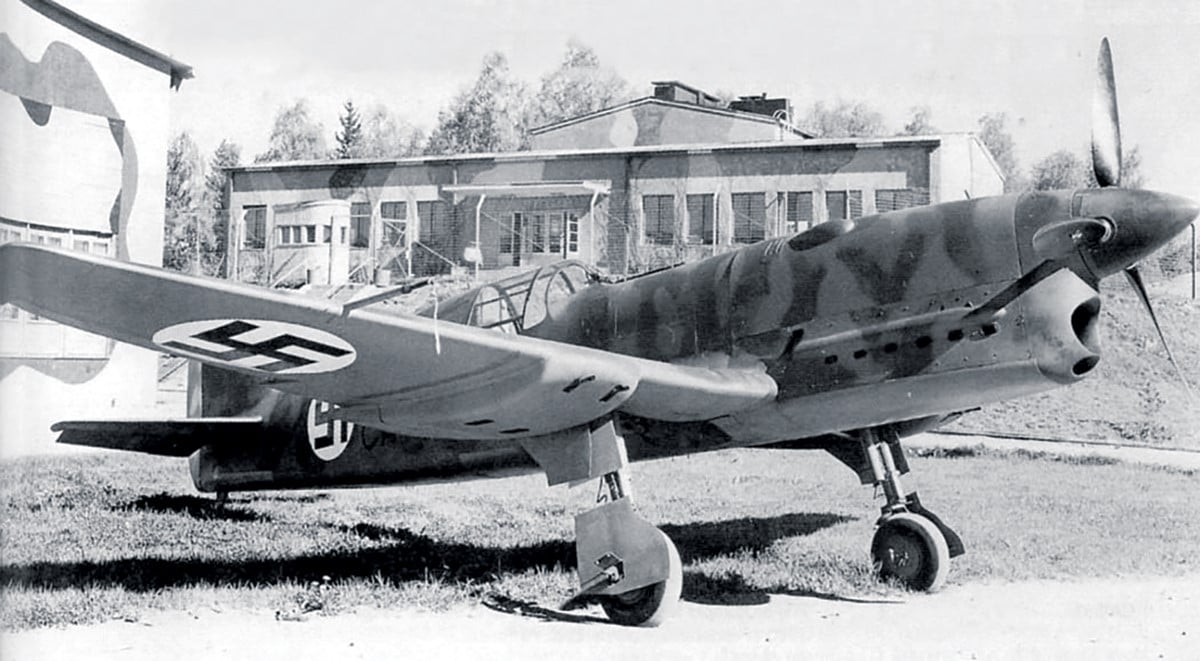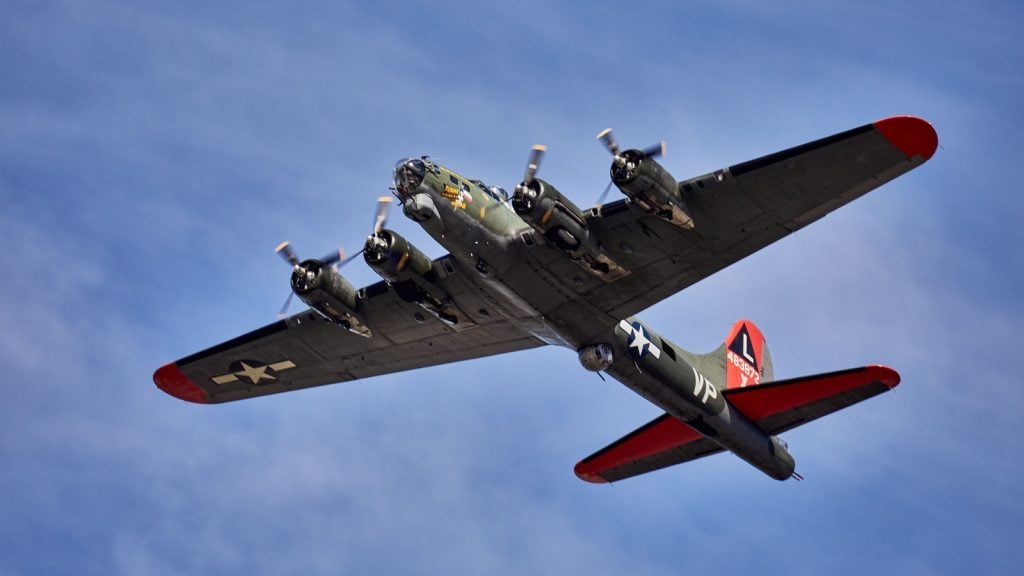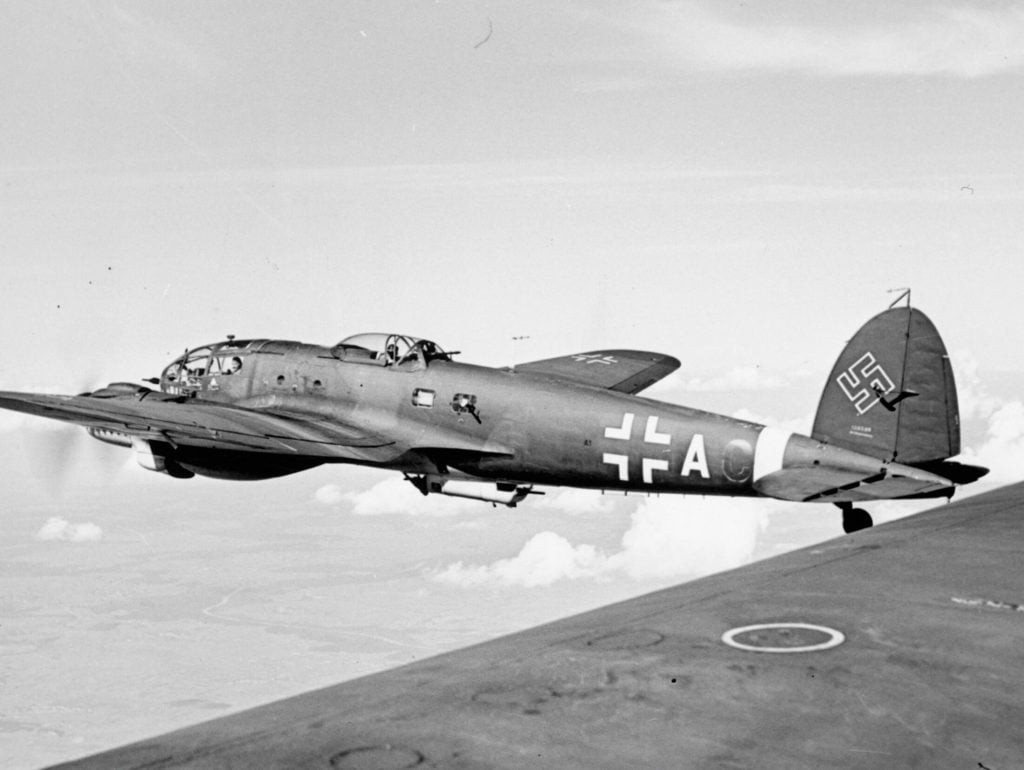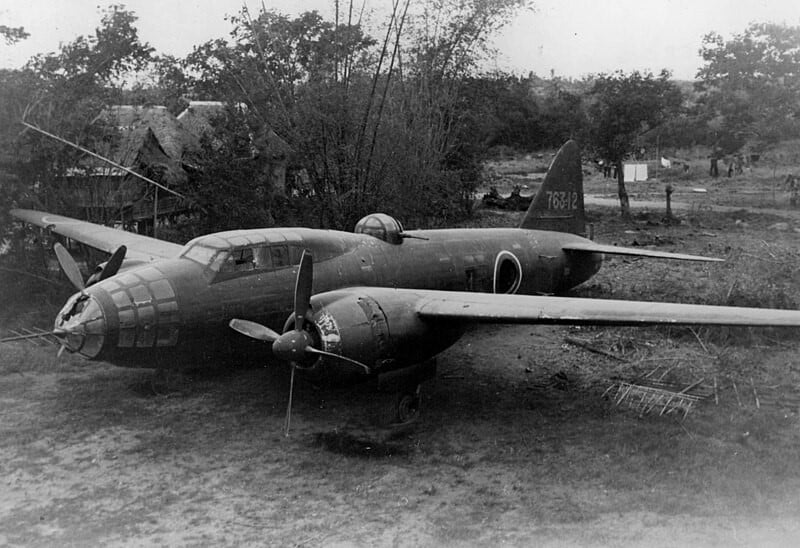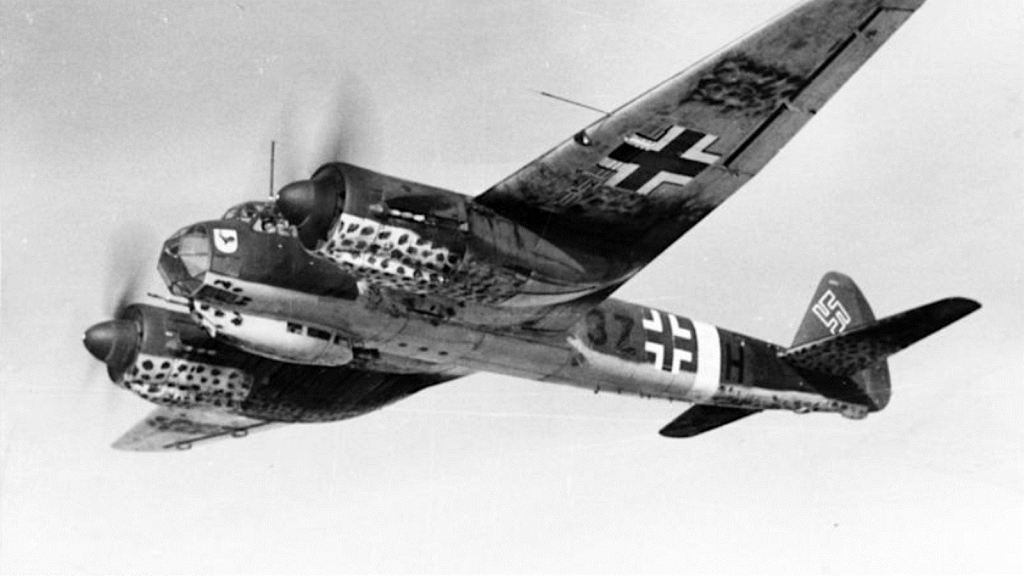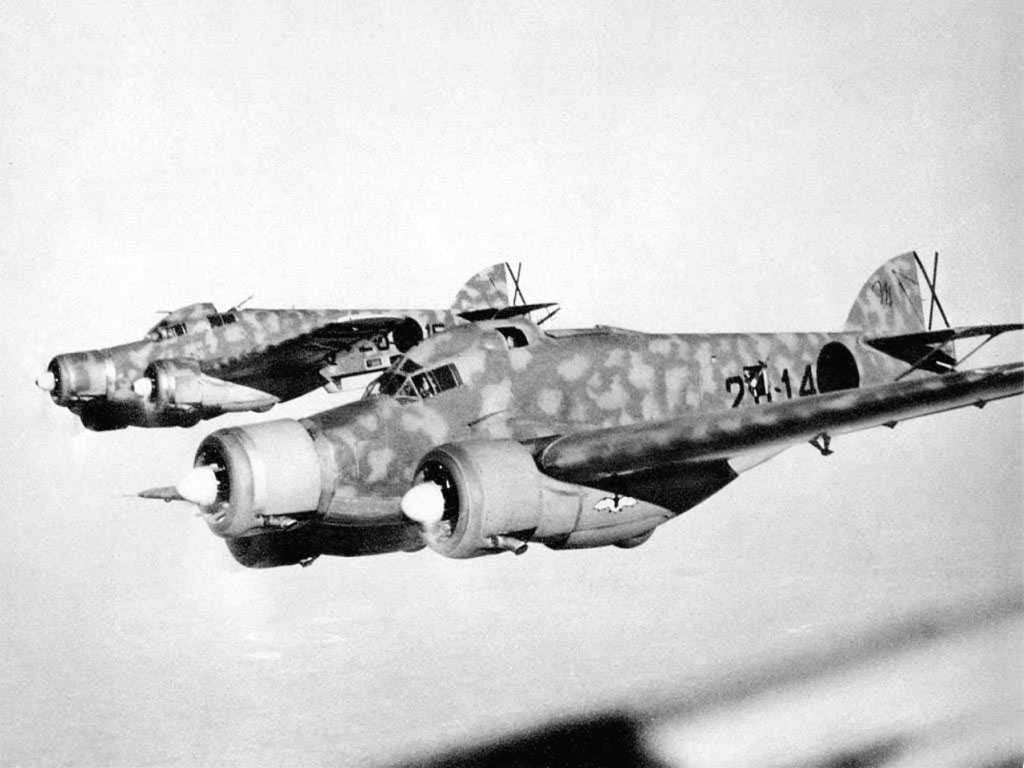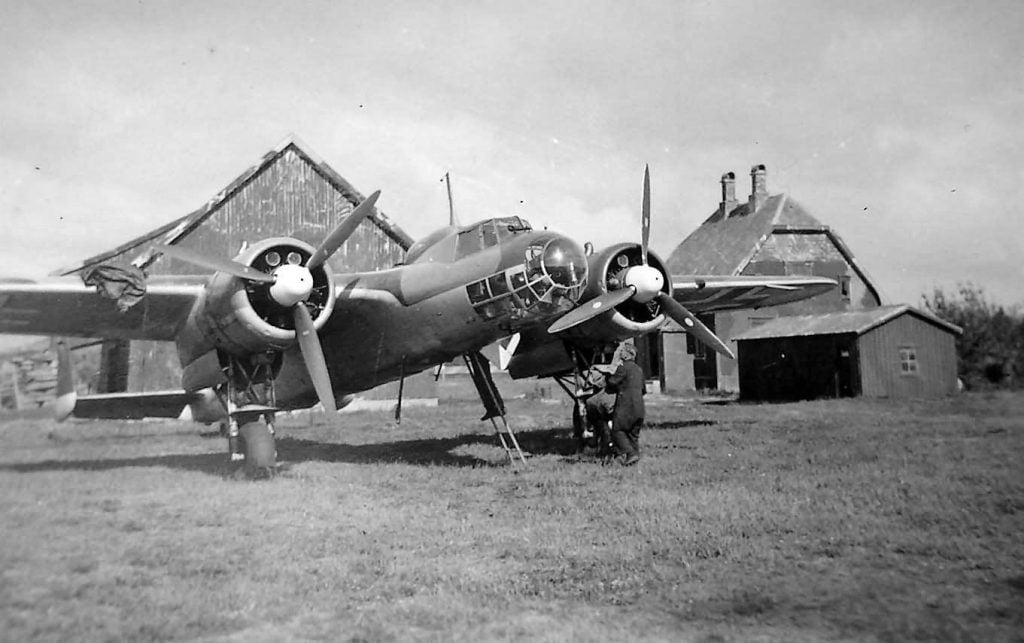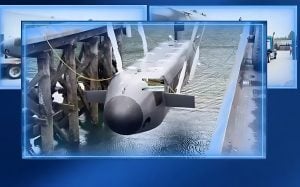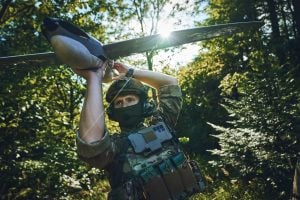The Second World War witnessed a colossal clash of aerial forces, with both the Allied and Axis powers vying for dominance in the skies. While the Allied nations, particularly the United States and United Kingdom, are renowned for their heavy bomber fleets, the Axis powers also produced a formidable array of bomber aircraft. These planes played a crucial role in the Axis military strategy, serving as the spearhead for their infamous Blitzkrieg tactics and carrying out devastating bombing campaigns.
In this comprehensive article, we delve into the stories of 5 Top Axis Bomber Planes of WWII. From the swift and maneuverable Heinkel He 111 to the versatile and heavily-produced Junkers Ju 88, each of these aircraft possessed unique capabilities and played a significant role in the Axis war effort. We’ll explore their design features, combat histories, and the impact they had on the overall strategic landscape of the conflict.
What Makes Stealth Technology So Effective?
1. The Heinkel He 111
The Heinkel He 111 was a German medium bomber that played a pivotal role in the early stages of World War II. Designed initially as a civil airliner, this aircraft was quickly adapted for military use and became a key component of Germany’s Blitzkrieg tactics. With its sleek and streamlined airframe, the He 111 was capable of impressive speeds, making it a formidable adversary in the skies.
Versatile and Adaptable
The Heinkel He 111 was a highly versatile aircraft, capable of fulfilling a variety of roles beyond its primary function as a bomber. Over the course of the war, it was utilized for reconnaissance, transport, and even torpedo bombing missions. This adaptability allowed the He 111 to remain relevant even as newer and more advanced aircraft entered the fray.
Evolving Capabilities
As the war progressed, the Heinkel He 111 underwent a series of upgrades and modifications to address its shortcomings. Improvements were made to its defensive armament, engine power, and overall performance, allowing the aircraft to remain a viable asset in the Luftwaffe’s arsenal. However, by 1940 and 1941, the limitations of the He 111 had become increasingly apparent, leading to its partial replacement by the more capable Junkers Ju 88.
Production Numbers and Combat Record
The Heinkel He 111 was produced in large numbers, with approximately 6,500 units built over the course of the war. It saw action in various theaters, including the Spanish Civil War, the Battle of Britain, and the Eastern Front. Despite its initial successes, the He 111 ultimately fell victim to the technological advancements of the Allied air forces, which were able to exploit its vulnerabilities and lack of defensive capabilities.
2. The Mitsubishi G4M
In contrast to the Axis powers’ focus on medium and heavy bombers, the Imperial Japanese Navy placed a greater emphasis on its fighter aircraft and naval forces. Nonetheless, the Mitsubishi G4M, also known as the “Betty,” emerged as one of Japan’s most significant bomber aircraft during the Pacific War.
A Compromised Design
The Mitsubishi G4M was a medium land-based bomber that suffered from several design flaws. Its lightweight construction and lack of adequate defensive armament made it highly vulnerable to enemy fighters and anti-aircraft fire. Allied pilots nicknamed the G4M the “Flying Lighter” due to its tendency to burst into flames after sustaining even minor damage.
Notable Victories and Losses
Despite its shortcomings, the Mitsubishi G4M did manage to achieve some notable victories, including the sinking of the British battleship HMS Prince of Wales and battlecruiser HMS Repulse. However, the aircraft’s vulnerabilities were eventually exploited, and it suffered significant losses, including the fatal shooting down of Japanese Admiral Yamamoto over Bougainville.
Production Numbers and Operational History
Approximately 2,400 Mitsubishi G4M bombers were produced during the war, making it the most widely manufactured Japanese bomber of the conflict. The aircraft served in most major Pacific War battles, but its design flaws and the growing technological superiority of the Allies ultimately limited its effectiveness and contribution to the overall Japanese war effort.
3. The Junkers Ju 88
While the Heinkel He 111 and Mitsubishi G4M were notable for their specific roles, the Junkers Ju 88 stood out as a true multi-role combat aircraft, capable of adapting to a wide range of missions.
Unparalleled Versatility
The Junkers Ju 88 was a remarkable feat of German engineering, serving as a bomber, dive bomber, torpedo bomber, heavy fighter, and even a reconnaissance platform. Its versatility allowed it to excel in a variety of combat scenarios, making it an invaluable asset to the Luftwaffe.
Massive Production and Longevity
The Junkers Ju 88 was produced in staggering numbers, with a total of 14,676 units built, including 104 prototypes. This massive production run ensured that the Ju 88 remained a ubiquitous presence in the skies throughout the war. Even after Germany’s surrender in 1945, hundreds of these aircraft remained in use, testament to their robust design and adaptability.
Technological Advancements
The Junkers Ju 88 was not only versatile but also technologically advanced for its time. Innovations such as its dive bombing capabilities and the incorporation of advanced avionics and targeting systems helped the Ju 88 maintain its relevance and effectiveness even as the war progressed.
Enduring Legacy
The Junkers Ju 88’s versatility and impressive production numbers have cemented its place as one of the most significant and influential Axis bomber aircraft of World War II. Its ability to adapt to changing circumstances and fulfill a wide range of roles made it a formidable component of the Luftwaffe’s arsenal.
Will 6th-Gen Fighter Jets Be Piloted by Humans?
4. The Savoia-Marchetti SM.79 Sparviero
While the Axis powers were dominated by the military might of Germany and Japan, Italy also contributed its own unique bomber aircraft to the war effort. The Savoia-Marchetti SM.79 Sparviero, or “Sparrowhawk,” was one of the most recognizable Italian military aircraft of the conflict.
Origins and Design
The SM.79 Sparviero originated in the early 1930s as a civilian aircraft, but it was quickly repurposed for military use as a medium bomber and torpedo bomber. Its distinctive dorsal “hump” and three-engine configuration made it easily recognizable on the battlefield.
Operational History
The Savoia-Marchetti SM.79 Sparviero saw action in various theaters of the war, including the Mediterranean, the Balkans, and the Eastern Front. Despite its age, the aircraft proved to be a capable and adaptable platform, serving in both bombing and torpedo attack roles.
Longevity and Endurance
The SM.79 Sparviero managed to outlive the war, remaining in Italian service until 1952. This longevity is a testament to the aircraft’s robust design and the resourcefulness of the Italian aviation industry, which continued to maintain and upgrade the Sparviero even as newer and more advanced aircraft entered the fray.
Production Numbers and Impact
Approximately 1,240 Savoia-Marchetti SM.79 Sparviero bombers were produced during the war, making it one of the most widely manufactured Italian military aircraft of the conflict. While it may not have had the same impact as the more famous Axis bomber designs, the Sparviero played a significant role in Italy’s aerial campaigns and contributed to the overall Axis war effort.
5. The Dornier Do 17
Another notable Axis bomber of the early war years was the Dornier Do 17, a reconnaissance-bomber aircraft that earned the nickname “the flying pencil” due to its long, slender fuselage.
Early Successes and Versatility
When it first entered service, the Dornier Do 17 was one of the fastest aircraft of its type, and it saw action in the Spanish Civil War, where it was used for bombing and long-range reconnaissance missions. The Do 17’s versatility allowed it to be employed in a variety of roles, including the dropping of pro-Nazi propaganda leaflets over Austria prior to the German annexation.
Participation in the Battle of Britain
As the war progressed, the Dornier Do 17 played a significant role in the Battle of Britain, where it was used as a bomber and reconnaissance platform. The aircraft’s speed and maneuverability made it a formidable opponent, but it ultimately succumbed to the technological advancements of the Allied air forces.
Widespread Deployment and Variants
The Dornier Do 17 was produced in large numbers, with over 2,100 units and derivatives built during the war. It was not only used by the German Luftwaffe but also by the air forces of several Axis-aligned states, including Bulgaria, Croatia, Finland, and Romania.
Decline and Legacy
As the war progressed, the Dornier Do 17’s limitations became increasingly apparent, and it was gradually phased out in favor of more advanced aircraft. However, the “flying pencil” remains an iconic symbol of the early stages of World War II, a testament to the Axis powers’ initial aerial superiority and the resilience of German engineering.
Celebrating 25 Years of Kargil Victory: A Tribute to Our Soldiers
Conclusion
The Axis bomber aircraft of World War II were a diverse and formidable array of aircraft, each with its own unique capabilities and contributions to the overall war effort. From the swift and maneuverable Heinkel He 111 to the versatile and heavily-produced Junkers Ju 88, these planes played a crucial role in the Axis military strategy, serving as the spearhead for their infamous Blitzkrieg tactics and carrying out devastating bombing campaigns.
While the Allies ultimately emerged victorious in the air war, the Axis bombers left an indelible mark on the course of the conflict, showcasing the ingenuity and technological prowess of their respective air forces. The stories of these aircraft and the pilots who flew them serve as a testament to the enduring legacy of aerial warfare and the pivotal role it played in shaping the outcome of World War II.
FAQs
Q1. Which Axis bomber aircraft was the most produced during World War II?
The Junkers Ju 88 was the most produced Axis bomber aircraft during World War II, with a total of 14,676 units built, including 104 prototypes.
Q2. Which Axis bomber aircraft was known for its vulnerability to enemy fire?
The Mitsubishi G4M, nicknamed the “Flying Lighter,” was known for its lightweight construction and lack of adequate defensive armament, making it highly vulnerable to enemy fighters and anti-aircraft fire.
Q3. Which Axis bomber aircraft was notable for its versatility and ability to adapt to a wide range of combat roles?
The Junkers Ju 88 was a true multi-role combat aircraft, serving as a bomber, dive bomber, torpedo bomber, heavy fighter, and even a reconnaissance platform, showcasing its remarkable versatility and adaptability.
Q4. Which Axis bomber aircraft remained in service long after the end of World War II?
The Savoia-Marchetti SM.79 Sparviero, an Italian medium bomber and torpedo bomber, remained in Italian service until 1952, outliving the war and demonstrating the robustness of its design.
Q5. Which Axis bomber aircraft was known for its distinctive “flying pencil” appearance?
The Dornier Do 17, a German reconnaissance-bomber aircraft, earned the nickname “the flying pencil” due to its long, slender fuselage, which gave it a unique and recognizable silhouette.
